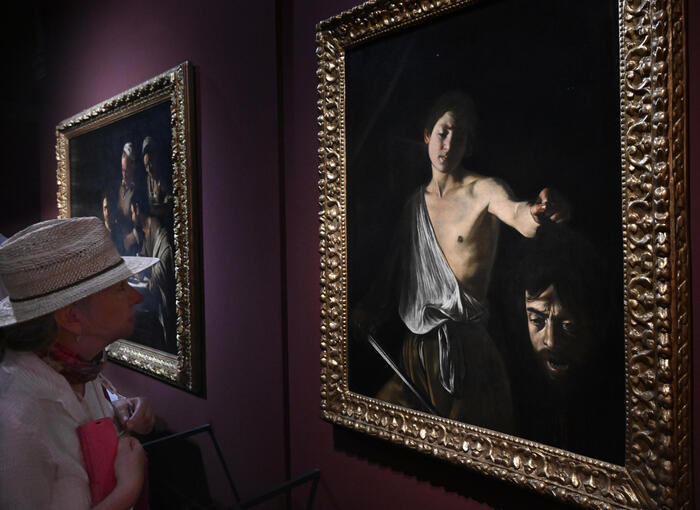MILAN - Two absolute masterpieces by Caravaggio are compared, side by side, at the Pinacoteca di Brera as part of the 'Nono dialogue' initiative, the third appointment that hosts the works of the Lombard master.
This is the 'David with the head of Goliath' from the Galleria Borghese in Rome which will dialogue, from 21 June to 25 September, with 'The dinner at Emmaus' at the Brera Art Gallery.
The new exhibition, curated by Letizia Lodi, will stage a comparison never seen before.
In fact, the two paintings, both belonging to the artist's late production and executed between Rome and Naples, are exhibited for the first time side by side with the public and scholars invited to discuss and discuss the dating of the 'David with the head of Goliath ', still much debated by critics.
"Five years after the 2017 dialogue on Caravaggio, we ask the public again to take part in the debate on
exact dating of the masterpiece from the Borghese Gallery - explained James Bradburne, general director of the Pinacoteca di Brera and the Braidense National Library -.
Each painting is a question and asks us to understand why it exists. "In the masterpiece of the Galleria Borghese, now on loan to Brera, David does not show a proud attitude of triumph as he holds and observes the severed head of Goliath, his expression is of pity towards that sinner. In the face of Goliath Caravaggio would have depicted himself, in a touching self-portrait, with his mouth wide open after having exhaled his last breath and suffering gaze, the lifeless complexion. Precisely the theme of forgiveness referred to the severed head of the giant would suggest, as recent studies have also explained,
that the realization of the painting is to be placed between the end of the Roman period and the first months of Caravaggio's stay in Naples.
The artist's death sentence had in fact been pronounced in 1606.
This would also explain the stylistic similarity with Brera's 'La cena in Emmaus', which visitors will be able to evaluate for themselves.

